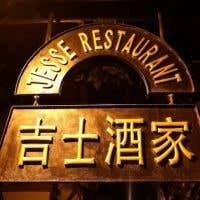This article was also published in the Financial Times.
As the blossoming magnolia trees herald spring in Shanghai, the army of ex-pats who have come from afar to further their careers in this extraordinary city indulge in a more altruistic pastime: discussing where those who are just passing through can experience their adopted city’s most authentic food.
Around the Glamour Bar at M on the Bund were two Americans, a Frenchman and Michelle Garnaut, the Australian restaurateur who established this gem in 1999. I had proposed a return trip to Yong Ti Yong in the Mandarin Hotel where I had enjoyed excellent dim sum the day before. I was listened to and then politely ignored.
One suggestion was Xibo, specializing in lamb, flatbreads and the cooking of north-west China; another proposed Xindalu in the Hyatt for those in the mood for Beijing duck; while the names of several more local places were bandied about.
There was a brief discussion of issues that still preoccupy even those who have lived here for many years – whether the standards of hygiene and service are the equal of the food – before Garnaut turned to me and decreed, ‘You really ought to try the Shanghai dumplings at a Din Tai Fung. It’s an extraordinary operation’.
We set off to one of the city’s many shopping malls, close to the Ritz Carlton, my professional interest piqued. I had heard nothing but exemplary comments about this group, which originated in Taiwan but has now spread across many cities on the Pacific Basin, garnering a reputation, justifiably I was to realise, for its food, rigorous staff training and scrupulous cleanliness.
I immediately witnessed two aspects of this fastidious approach as we joined the queue for a table at 7.30pm on a Sunday. To my left behind tall glass windows were a dozen chefs in whites, including masks, head down intently making the xiaolong bao on which this company has made its name. These dumplings, filled with various diced meats and a small amount of soup, require 18 pleats in their outer skin for authenticity and are a labour of love and dexterity.
I stood transfixed until there was a tap on my elbow. When I turned around there was a member of the reception team with a tray of cups of jasmine tea. This, and the section on the comment card we were presented with at the end of the meal asking me to mark, inter alia, the quality of the smile displayed by the staff, were examples of a very well thought out, and executed, approach to customer service.
The food was of the same high quality, too. The dumplings were delicious and served not so hot that they burnt one’s mouth; spicy wontons were equally good; and best of all, was a dish of silky bean curd topped with diced hairy crab, a Shanghainese delicacy. There was, however, one unusual factor that reminded me of London (where I hope Din Tai Fung will open a branch one day), and that was the very high number of tables where French was being spoken.
The following lunchtime at Rui Fu Yuan (the good fortune garden restaurant), close to the Intercontinental Ruijin, I was certainly the only Westerner, as well as being a good few years younger than most of the Chinese customers.
Over 40 years ago this was initially opened as a People’s Dining Hall before becoming a restaurant in the late 1990s. It is still government- owned and my Shanghainese friend joked as we sat down ‘there won’t be a service charge, because there isn’t much service’.
This was slightly harsh, since our long-serving waitress did smile as we turned over the numerous pages of the plastic menu that conveniently came with better-than-average photos of the food. From these we collectively constructed a most satisfying meal.
We began with large pork buns, crisp underneath and topped with sesame seeds; a plate of tiny peeled shrimps; a large casserole of soup with a fillet of yellow croaker, a freshwater fish, and dumplings; and finely diced eel that had the sweet overtones the Shanghainese crave. My professional nemesis came with the serving of a crab, initially brought to the table alive in a red plastic bucket, before being deep-fried. Picking up the crab still in its shell with chopsticks so that I could suck out the flesh, I found quite beyond me.
My last stop was the most sought after. Despite the plethora of new and high-profile restaurant openings, one of the few places where a booking is essential at least a month in advance even for lunch (and then some local persuasion may be necessary), is Jesse in the former French Concession, still distinguished by the plane trees outside.
This tiny and certainly non-descript looking restaurant comprises four tables on a lower ground level and eight up a winding staircase (all unnecessary furniture, I could not help but notice, is stored on the pavement outside). It is a family affair, with the young son helping his father by the entrance with the kitchen just the other side of the door.
But the flavours of the very varied food are sensational. An unctuous rendition of braised pork belly Shanghai style; a clear broth stuffed with wild mushrooms; small, peeled peas sautéed with diced ham; and, Jesse's speciality, the head of a large white fish roasted under diced vegetables. This was truly stunning Shanghainese food, albeit in a most ordinary setting.
Din Tai Fung, www.dintaifung.com.tw
Rui Fu Yuan, 132 South Maoming Road South, 00 86 64458999
Jesse, 41, TianPing Road, 00 86 62829260

